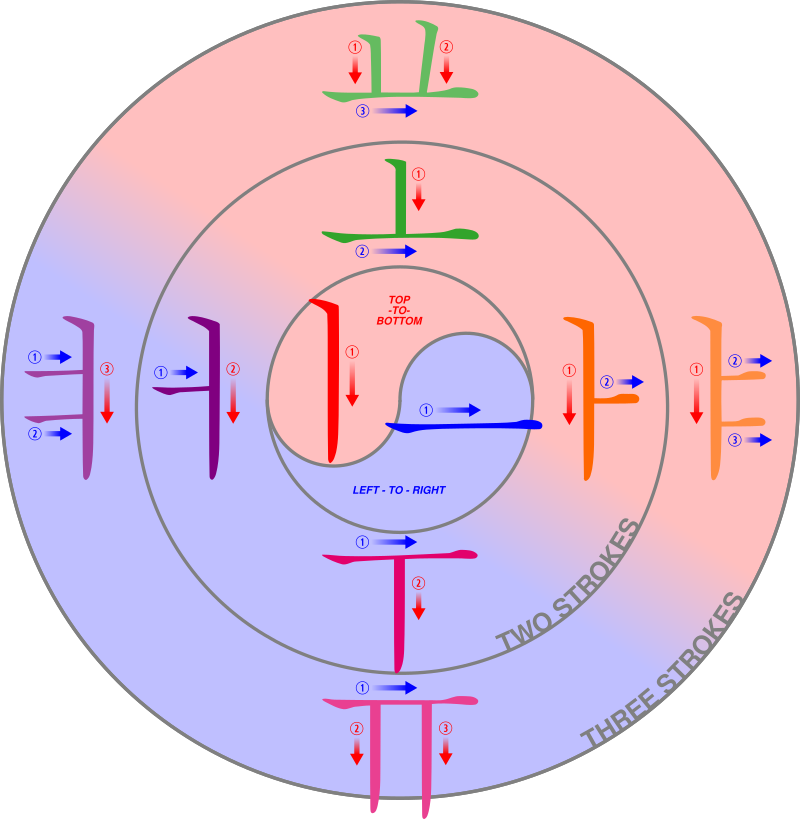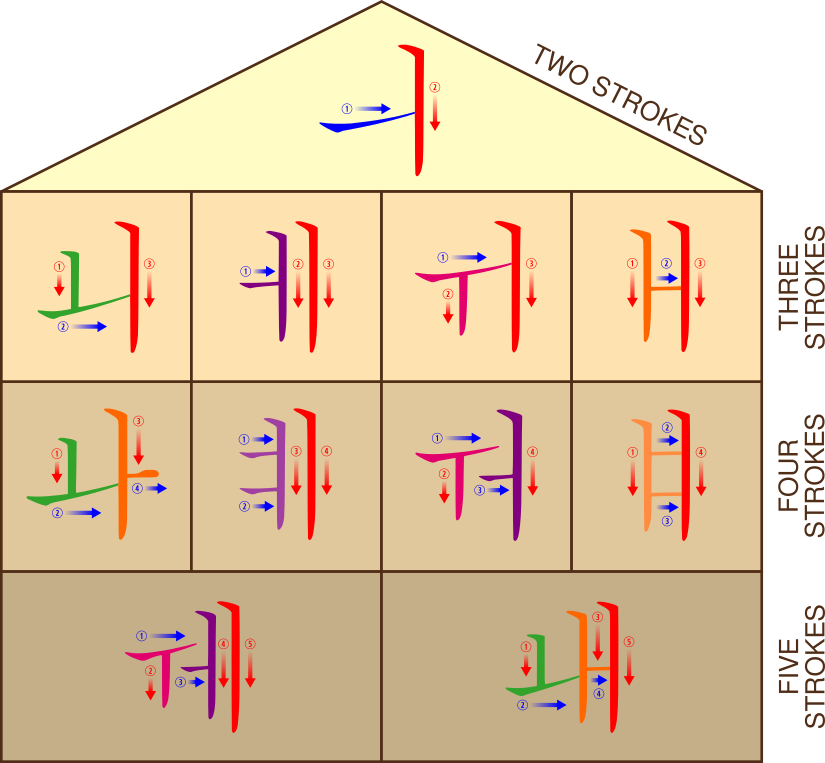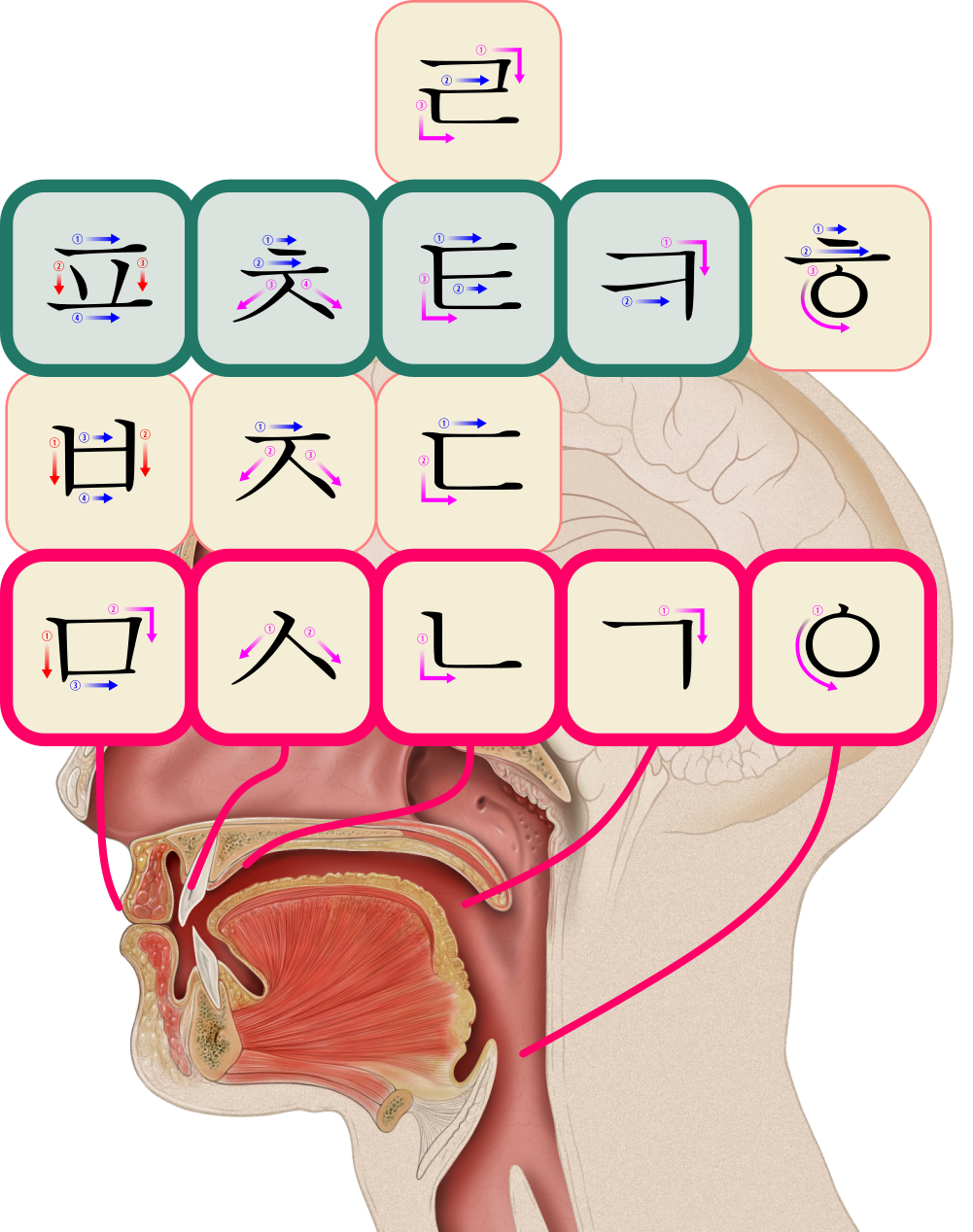Back • Return Home
Reading & Writing Korean
This will be a personal collection of images, mnemonics, and simple descriptions to help one to read and write Korean.
Step #1: The Ten Basic Vowels
To understand how each letter is pronounced, use this table of vowels with audio (scroll slightly down the page until you see little yellow speaker icons). Ignore everything else on the page for now. Just listen to the vowels that are shown on the chart above. Associate the sound that you hear with the feeling of writing out its shape. Always write out the strokes in this order!
Once you are comfortable with each one, remember how to distinguish them from one another by connecting all of them together in your memory through a simple song.
Step #2: The Eleven Complex Vowels
These are "complex" vowels made up of combinations of the basic ones. Notice the corresponding colors. Use the same vowel table as before to get their pronunciations. Again, ignore everything else for now. Just associate the sound that you hear with what it feels like to write it.
Once you are comfortable with each of them, let's generate a mnemonic to link all of them together. For example: Imagine that all of the characters in the above house-like diagram are a bunch of people who live under the same roof, similar to a family sitcom or a reality TV show. The four stroke characters are in the kitchen and living room on the first floor. The three stroke characters are staying within the upstairs bedrooms. There is a two stroke character alone in the attic, while two five stroke characters are in the basement. Come up with a fun story to make it a vivid memory. Are the five stroke characters wild beasts that must be kept in the basement for everyone's safety? Is the lone two stroke character in the attic a ghost? The only limit here is your imagination. The more personally meaningful you can make it, the better.
Step #3: The Fourteen Basic Consonants
Head Anatomy Diagram Credit: Patrick J. Lynch
The five characters on the bottom (highlighted in hot pink) are symbolic of the part of the mouth that is involved in their pronunciation. From left-to-right, these parts are: the lips, the teeth, the hard palate + tip of tongue, the soft palate + back of the tongue, and the throat
Some of them have an obvious visual similarity to the part of the mouth that they are related to. For example: The one that represents the lips looks like a square, which symbolizes the opening of the mouth. The character that represents the back of the tongue has a similar shape to the back of the tongue in this cross-section view. The one that looks like a circle represents the opening of the throat. Etc.
All characters within the same column are pronounced in a similar way. Notice how they are written in a similar way as well (e.g.: by adding a single stroke to the same general shape).
The four characters highlighted in blue-green are "aspirated", meaning that a little puff of air is released as they are said.
Again, use the same table as before to get their pronunciations. I humbly suggest ignoring any English letters that they might be associated with. The pronunciation often changes based on the context and there is no exact one-to-one correspondence between the letters of English and Korean. Therefore, those associations might be more confusing than helpful. For now, just associate the sound you hear with what it feels like to write it. Repeat them a few times, gaining comfort through familiarity.
Step #4: The Five Tense Consonants
Five of the consonants that we already know can be doubled:
ㅂ → ㅃ
ㅅ → ㅆ
ㅈ → ㅉ
ㄷ → ㄸ
ㄱ → ㄲ
We won't repeat how they are written because it is exactly the same as before, just repeated twice. Their pronunciations, as well as a few videos that help one to differentiate them from one another, are available on this page.
Step #5: Consonant Combinations
[In Progress...]



